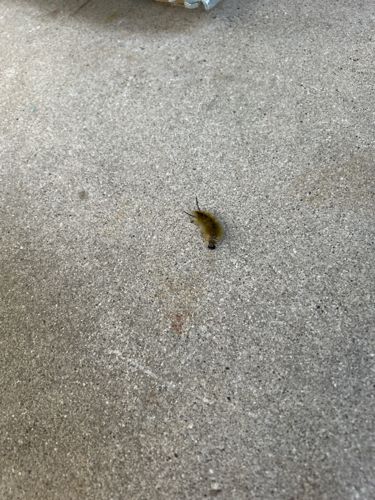Tussock Moth Caterpillar (likely American Dagger Moth Caterpillar)
Scientific Name: Acronicta americana (for American Dagger Moth, though other tussock moths look similar)
Order & Family: Lepidoptera, Erebidae (subfamily Lymantriinae for some tussock moths, others are in Noctuidae or Erebidae)
Size: Caterpillars typically range from 3-6 cm (1.2-2.4 inches) in length when fully grown.

Natural Habitat
Found in deciduous and mixed forests, gardens, and urban areas where host plants are present. Caterpillars live on trees and shrubs.
Diet & Feeding
Herbivorous. These caterpillars feed on the leaves of various deciduous trees, including oak, maple, birch, elm, willow, and often fruit trees.
Behavior Patterns
They are solitary feeders. When disturbed, some tussock moth caterpillars may curl up or drop from their host plant. The hairs are often urticating (stinging) as a defense mechanism. They overwinter as pupae and emerge as moths in the spring.
Risks & Benefits
Potential risks include skin irritation, rashes, or allergic reactions (dermatitis) upon contact with their prickly hairs, which are urticating. Benefits include serving as a food source for birds and other predators, and as part of the ecosystem's nutrient cycling. They can occasionally cause defoliation to host trees, but severe damage is rare.
Identified on: 9/14/2025